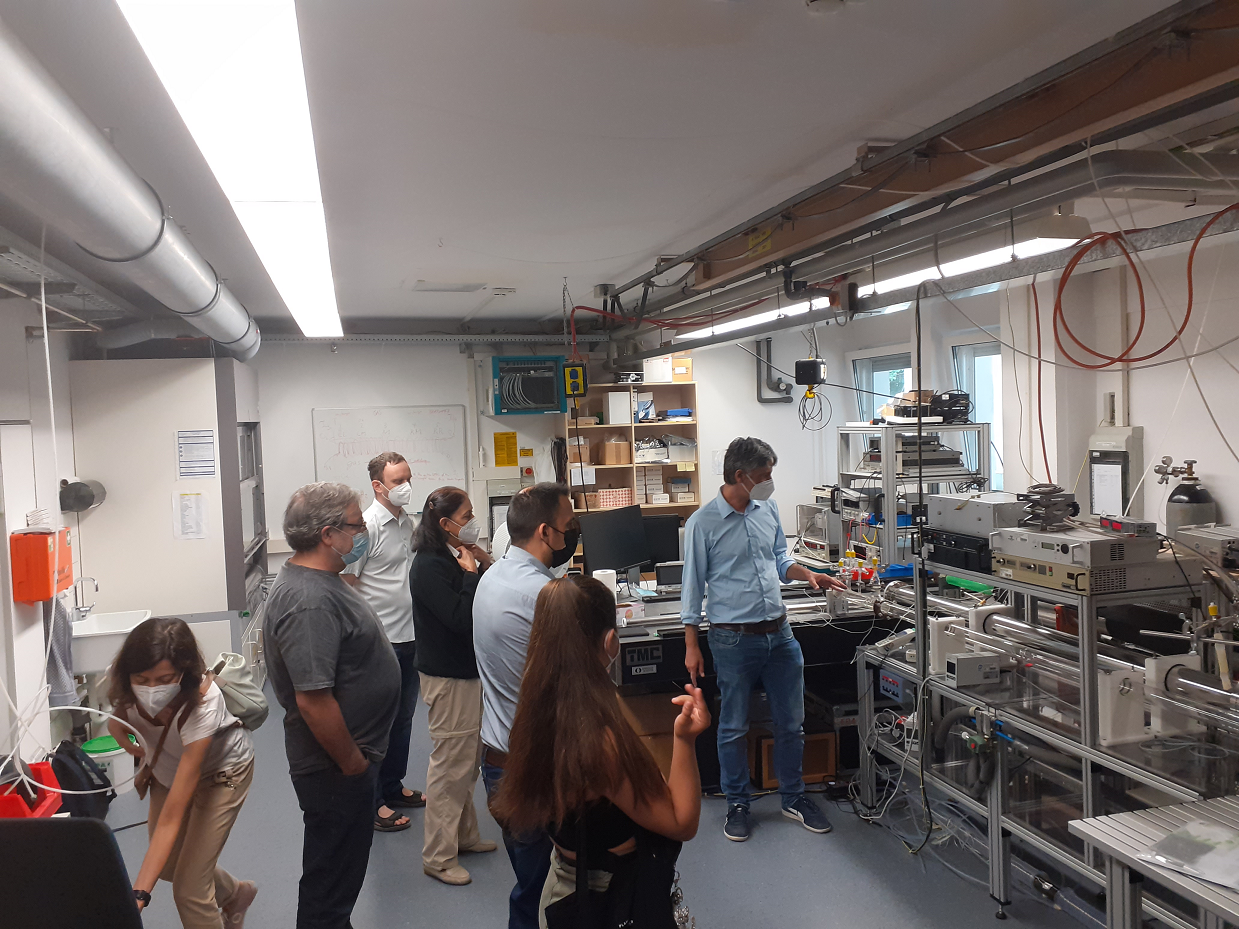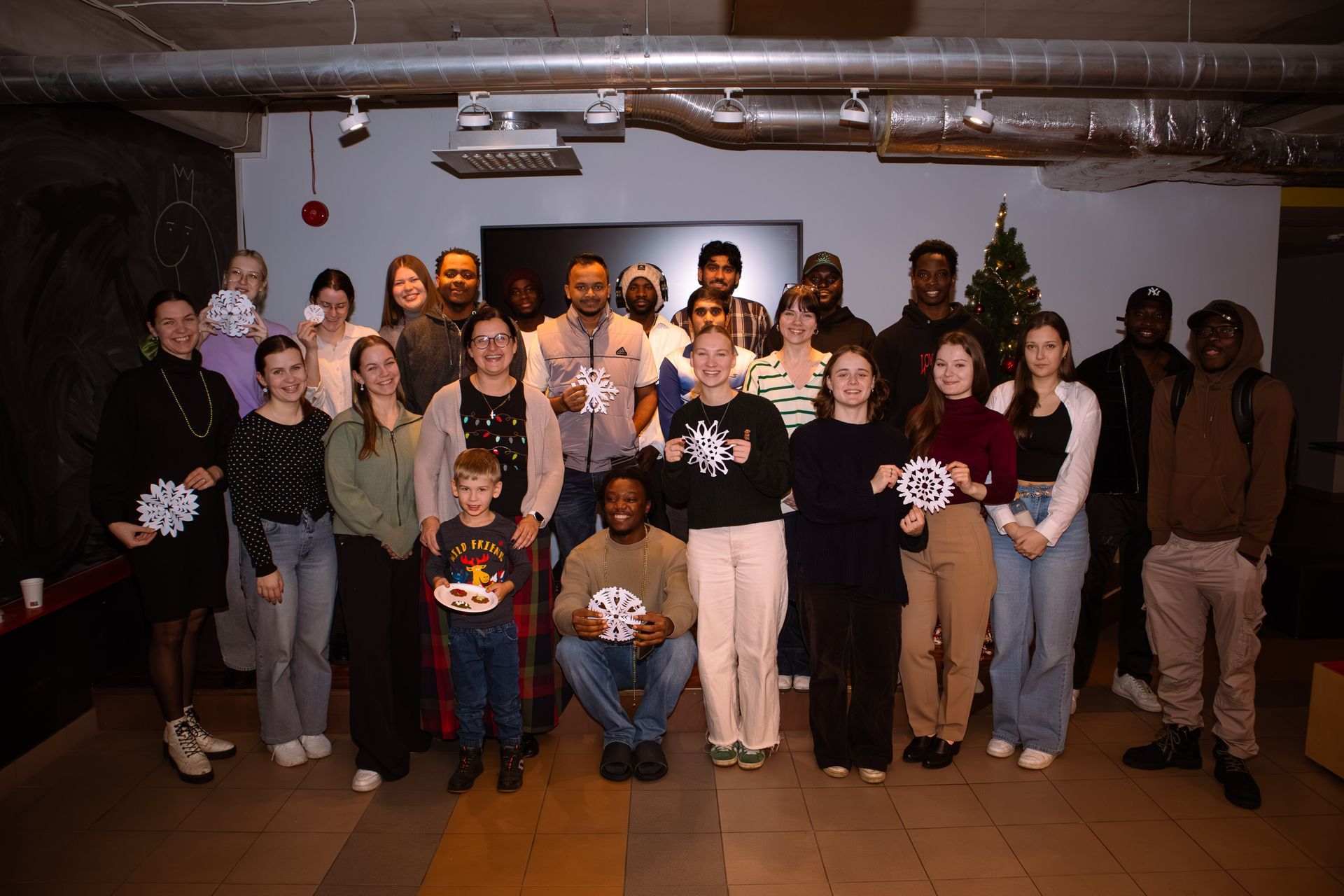Project “Desorption of icy molecules in the interstellar medium (DIMD)” has reached middle point
DIMD started with filling up project’s vacancies by attracting four students. Two of them are new employees of VUAS, who already have defended their bachelor’s and master’s thesis. As planned in the project application, contacts with foreign scientists were continued and formed anew. The astrochemical international cooperation project LILAC, led by Spain, was most important in this aspect. In July 2022, DIMD’s scientific leader J. Kalvāns participated in LILAC meeting at Max Planck Institute for Extraterrestrial Physics (MPE, Garching, Germany) with a report “Aspects of physical processing of interstellar icy mantles”. VUAS scientists also are part of LILAC’s proposed continuation project SENTINEL.

Visit in the laboratories of MPE in Summer 2022. J. Kalvāns is furthest in the background.
The major scientific topic during the first half of DIMD was the chemical consequences of collisions between icy grains in star-forming nebulas (interstellar gas-dust clouds). A hypothesis that collisions with velocities of tens to hundreds of meters per second produce chunks of ice was justified by computational modelling. The lifetime in the cloud of such ice nanoparticles was calculated, as their destruction by various forms of radiation allows for an unexpected appearance of some organic molecules in the gas phase – where they actually have been observed. The frequency of grain collisions was calculated with the help of a foreign colleague from the University of Texas. The grain collisions are determined by the movement of gas masses in the nebula. In a prestellar phase, the movements mostly lead towards the centre, and are delayed by magnetic fields, turbulence (chaotic gas movement, induced by the explosions of massive stars), and temperature. This work was presented in the international astronomy conference COSPAR’2022. The completed research manuscript was submitted to the high-level European scientific journal Astronomy & Astrophysics in the summer of 2023 with the title “Collisional desorption of organic ices in a prestellar core”.
The microscopic molecular and dust grain processes occur in a nebula, whose size are larger that the Solar System by a factor of hundreds. The gravitational collapse of such clouds was followed with astrophysical modelling. The obtained data are to be used as a standard for further astrochemical models. The data were reported by K. Veitners and J. Kalvāns in the VUAS conference BAASP’2023 in presentation “Dataset for physical conditions in prestellar cores”. Work continues with the preparation of a scientific manuscript. A separate and supplementary DIMD research direction is radiation transfer in a dusty, star-forming cloud. The program for following the collapse of the cloud is being paired with a radiation transfer program. It will allow to obtain, for example, the dust temperature distribution within the cloud in each step of its evolution. J. Freimanis reported the interim results at the International Astronomical Union Symposium 384, Poland, with poster “On the significance of polarization of continuous spectrum in modelling of circumstellar dust shells” in Autumn 2023.
The DIMD project was used to address domestic audiences via a popular scientific article “The puzzles of molecular clouds” in the journal Starry Sky, and a talk “The splitting of icy grains in interstellar clouds” at the 81st Scientific conference of the University of Latvia.
Share on other platforms
Other news







